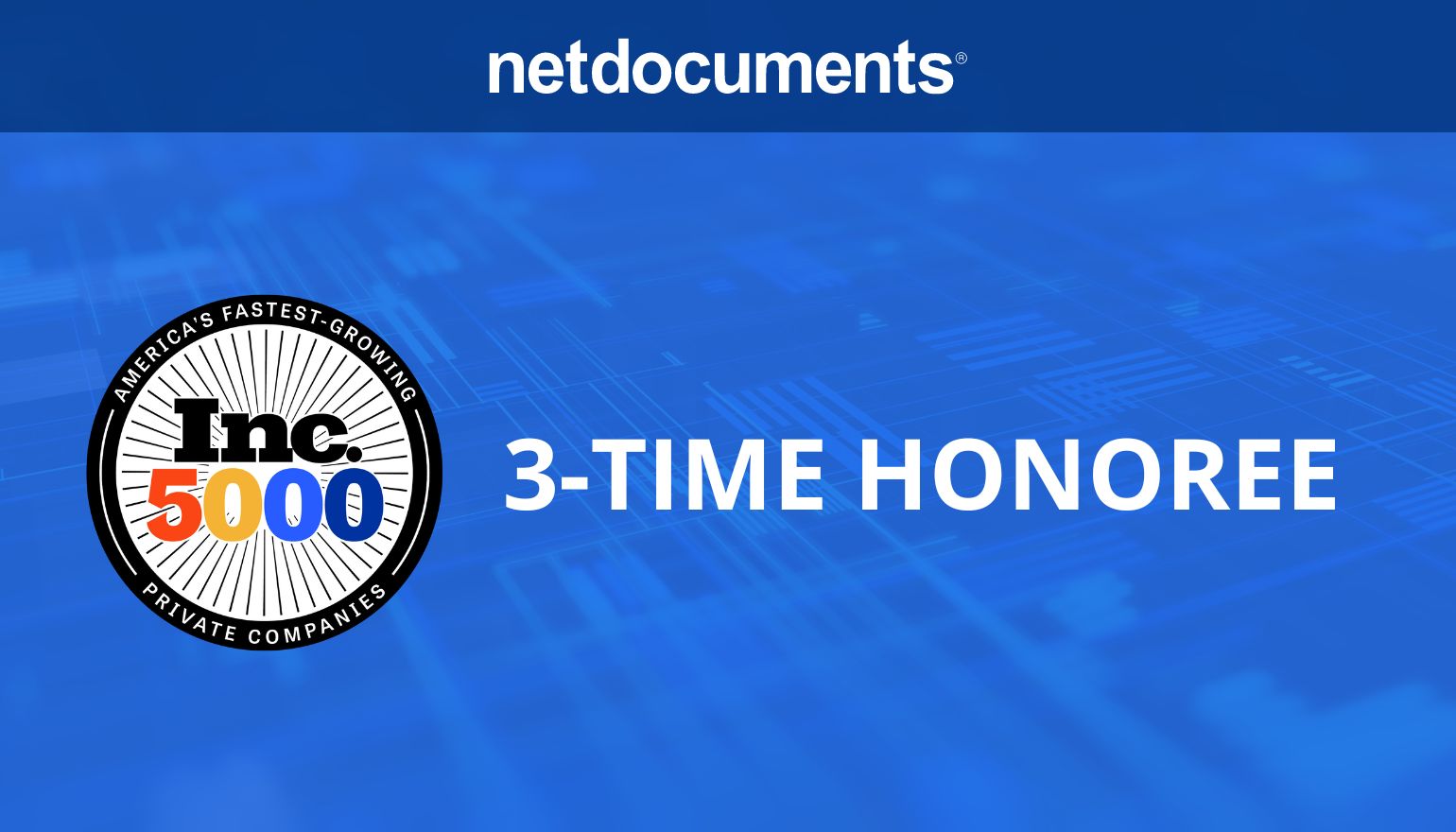Blog
-

- Blog
NetDocuments Wins Practice Management Innovation Award at 2025 Legalweek Conference
NetDocuments is proud to announce a new accolade for our intelligent document management system (DMS). The DMS earned a Leaders…
-

- Blog
Ready-to-Go AI Apps for Legal Use Cases Available Now in the New ndMAX Studio
Legal professionals are looking for smarter, faster, secure ways to harness AI – and at NetDocuments, we’re making it easier…
-

- Blog
AI-Driven Legal Tech Trends for 2025
With 79% of law firm professionals now incorporating AI tools into their daily work, and corporate legal departments being even…
-

- Blog
Convincing Corporate IT That Legal Really Is Different: Making the Case for Corporate Legal Department Software
Explore the unique challenges legal operations leaders face in advocating for specialized technology within corporate environments. This blog delves into…
-

- Blog
The Digital Shift: Embracing AI for Legal Documents
The legal industry is facing a new era of transformation, driven by rapid advancements in digital technology. At the forefront…
-

- Blog
The Ultimate LegalTech Buyer’s Guide: 2024 Edition
Explore the 2024 LegalTech Buyer’s Guide to discover top legal technology solutions, including AI-powered tools like NetDocuments. Learn how the…
-

- Blog
The IT Admin’s Guide to Embracing AI and Cloud Computing for Small Law Firms
For IT administrators, minimizing downtime and providing lawyers with the tools they need to deliver exceptional client services is a…
-

- Blog
A Closer Look at Financial Health and Strategic Opportunities in the UK: How Do Law Firms Maintain a Competitive Advantage?
As we take a look at the financial performance of UK law firms this fiscal year, the initial figures present…
-

- Blog
Stay Connected and Productive: Why Law Firms Must Embrace Cloud-Based Document Management for Remote Work
This article will explore how cloud-based document management systems (DMSs) support flexible work environments and foster effective collaboration with clients…
-

- Blog
NetDocuments Ranks on 2024 Inc. 5000
NetDocuments Ranks on 2024 Inc. 5000 for the third time. NetDocuments’ inclusion in the 2024 Inc. 5000 list reflects its…
-

- Blog
Addressing Performance and Reliability: Why Law Firms Are Switching to the Cloud
By reducing downtime and improving system responsiveness, a cloud DMS allows lawyers to focus on what they do best: practicing…
-

- Blog
Navigating Data Recovery, Compliance, and Security: Why Your Law Firm Should Consider a Cloud-Based DMS
The complexities of data recovery, compliance, and security present even more compelling reasons to make the switch to a cloud-based…
-

- Blog
Exciting Activities Await at ILTACON 2024 with NetDocuments
Whether you’re looking to deepen your knowledge on AI, automation, Microsoft 365, Teams, and more; see live product demonstrations; or…
-

- Blog
How to Create and Run a Paperless Law Office
It’s no secret that attorneys love paper. It’s also no secret that paper requires extra time to file, store, and…
-

- Blog
The Rising Tide of Document Overload in Small Firms
Small law firms face a daunting antagonist: document overload. Into the confusion steps in the Document Management System (DMS), a…
-

- Blog
The Imperative of Scalability: Why Law Firms Should Migrate Document Management to the Cloud
For law firms, the transition from an on-premises to a cloud-based document management system is becoming a strategic necessity. In…


